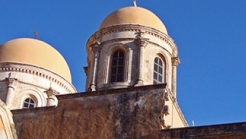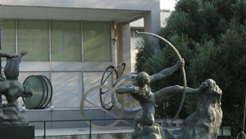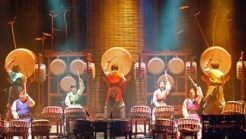

Greece
Τhe report of the Archaeological Museum Rethymno include items from various excavations and give a timeless image of cultural history of the country from the Neolithic period to the years of Roman occupancy.
The collections include:
- Findings from late neolithic (3500 – 2900 B.C. ) and early minoan (2800 – 2100 b.c. ) years from the caves Geranium, Melidonioy, Margelon and Εlenon.
- Findings minoan era (2100 – 1600 BC) from the building blocks of Apodoyloy, Monastiraki and the holy peak in Βrisina.
-Findings late minoan era (1600 – 1100 BC) of the cemeteries in the region. Representative is the cemetery of Kalyvon.
- Findings geometric (1000 – 700 B.C. ) and archaic (700 – 500 B.C. ) years of Eleftherna and Axos.
- Findings classical, Hellenistic era and roman years from Stavromenos and Argyroupolis (Lappa).
One of the most important exhibits of the Museum are:
- Larnaca with imaging hunting scene from Armeni Ancient Necropolis of Kalyvon (1320 – 1200 BC).
- Figurine minoan goddess “ICU ‘ towering hands”from the Pagalochori (1320 – 1200 BC).
- Marble statue Aphrodite of Argyroupolis (1ST A.D. b.c. ).
- Marble figurine from Gerani cave (3600 – 3200 BC).
- Clay phantom temple from which survived the floor, from the Monastiraki (1800 – 1700 BC).
- Part Galindolowland phantom bank tenders with inscription in linear A writing, from the sacred summit Βrisina (1700 – 1600 BC).
- Ηθμοπυξίδα from Stavromenos. Clay ajar vessel with foot and cap. The bottom of it is pierced. Bear decor from continuous coils and plants. (1500 – 1450 BC).
- Head clay female figurine from Axos (around 530 B.C. ).
- Part of marble grave column from Stavromenos. Shown naked athlete with dog (about 460 B.C. ).


The Monastery of Agia Triada of Τzagkarolon was built in the early 17th century by wanne Ιeremia and Larentio,venetian-cretan family of Τzagkarolon in smaller, property of hieromonk Joachim and Sofianou.


The National Gallery has in its collections more than 17.000 works of painting, sculpture, engravings and other forms of art, and is the treasury of the recent Greek artistic creativity, covering a timespan from the metabyzantine days up to our days.


In summer everything changes and airy dress color of music and art. The Municipality of Heraklion organizes music festivals that unite all art lovers who are in town. The venue of the event, the Venetian walls, create the appropriate atmosphere for any music lovers to travel to another era, dreamy ...
1039 Ε 6061 01515 00